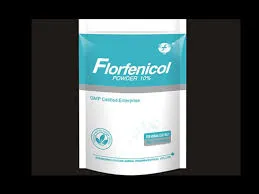
Agu . 14, 2024 01:37 Back to list
Exploring the Benefits of Custom Doxycycline and Tiamulin Treatments for Poultry Health in Chickens
Custom Use of Doxycycline and Tiamulin for Chickens A Review
The poultry industry plays a significant role in global food production, providing a substantial source of protein through chicken meat and eggs. However, like all livestock, chickens are susceptible to various infections and diseases that can severely impact their health and productivity. To mitigate these health risks, veterinarians and poultry producers often turn to antibiotics. Among the antibiotics used, doxycycline and tiamulin have gained attention for their efficacy in treating bacterial infections in chickens.
Understanding Doxycycline and Tiamulin
Doxycycline is a broad-spectrum antibiotic belonging to the tetracycline class. It is effective against a range of bacteria, including those responsible for respiratory diseases, enteritis, and other infections commonly found in poultry. Tiamulin, on the other hand, is a pleuromutilin antibiotic, primarily effective against Mycoplasma species and certain bacteria that cause diseases like chronic respiratory disease in chickens. Both antibiotics help address the challenges faced in flocks, particularly in intensive farming systems where the risk of disease outbreaks is heightened.
Importance of Custom Use
The custom use of doxycycline and tiamulin relates to the tailored application based on the specific needs of individual flocks. This is crucial as not all bacterial infections react similarly to antibiotics, and resistance can develop if antibiotics are used indiscriminately. Customization can involve adjusting dosages, administration routes (oral, injectable), and treatment duration based on factors such as the age of the chickens, the severity of the infection, and disease prevalence in the area.
By employing a custom approach, poultry producers are better equipped to ensure that treatment is both effective and minimizes the risk of developing antibiotic-resistant bacteria. Resistance is a growing concern in veterinary medicine, and custom usage strategies may help alleviate this issue by reducing unnecessary antibiotic exposure.
custom doxycycline tiamulin for chickens

Implementation in Farming Practices
Implementing custom antibiotic treatment requires a strategic approach. First and foremost, accurate diagnosis is essential. Veterinarians often carry out bacterial cultures and sensitivity tests to identify the specific pathogens affecting a flock and establish which antibiotics would be most effective. Once the diagnosis is made, dosages can be tailored accordingly, taking into account the specific conditions of the farm and the health status of the chickens.
Monitoring the effects of treatment is also crucial. Continuous evaluation allows for adjustments to be made in response to the flock's health progress. By keeping detailed records of treatment responses, producers can refine their protocols for future outbreaks, ensuring that the strategies employed are effective and based on empirical evidence.
Challenges and Considerations
Despite the benefits of custom antibiotic use, challenges remain. Increased regulations around antibiotic use in agriculture necessitate strict adherence to guidelines and veterinarian oversight. Producers must also consider ethical implications and consumer perceptions regarding antibiotic use in livestock. There's a growing demand for antibiotic-free meat, pushing poultry producers to seek alternative management strategies such as biosecurity measures, vaccination programs, and improved husbandry practices.
Conclusion
The custom use of doxycycline and tiamulin represents a proactive approach to managing bacterial infections in chickens. By focusing on tailored treatments, poultry producers can enhance the health and productivity of their flocks while addressing concerns over antibiotic resistance. Balancing effective disease management with ethical considerations will be key as the poultry industry continues to evolve in response to consumer expectations and regulatory frameworks.
-
Premium Honeysuckle Products - Leading Honeysuckle Manufacturer & Supplier Factory
NewsJun.10,2025
-
Pulmonary Edema Solutions from Leading Manufacturer & Supplier Reliable Factory Price
NewsJun.10,2025
-
Red Eyes - Leading Red Eyes Manufacturer & Supplier, Premium Quality Factory Price
NewsJun.10,2025
-
Broiler Ascites Syndrome Solutions Top Manufacturers
NewsJun.10,2025
-
Premium Amoxicillin Suppliers Reliable Biomox Mexican Factories
NewsJun.10,2025
-
Top Brewing Cell Wall Solutions Optimized Efficiency
NewsJun.09,2025




